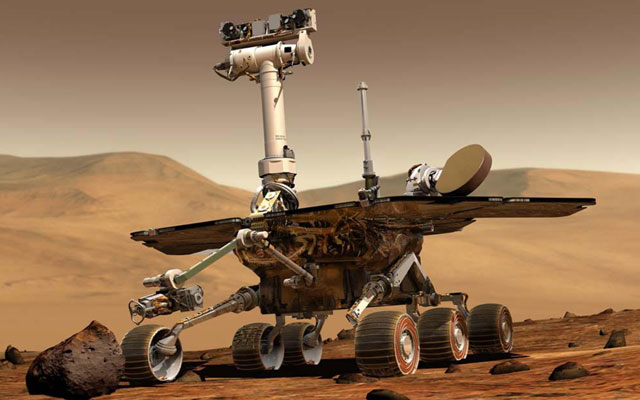
NASA Mars rovers Spirit and Opportunity have been exploring regions on opposite sides of Mars since January 2004. Originally designed to operate for three months, they have far exceeded their expected lifetimes and distances traveled. Each has found evidence of long-ago Martian environments where water was active and conditions may have been suitable for life.
The landing for each resembled that of the 1997 Mars Pathfinder mission. A parachute deployed to slow the spacecraft, rockets fired to slow it further just before impact, and airbags inflated to cushion the landing. Upon reaching the surface, the spacecraft bounced about a dozen times. When it stopped, the airbags deflated and retracted and the petals opened up, bringing the lander to an upright position and revealing the rover.
The landed portion of the mission features a design dramatically different from Mars Pathfinder. Where Pathfinder had scientific instruments on both the lander and the small Sojourner rover, these larger rovers carry all their instruments with them. Immediately after landing, each rover began reconnaissance of the landing site by taking a 360-degree visible color and infrared image panorama. Then they each left the petal structure behind, driving off to begin exploration.
Using images and spectra taken by the rovers, scientists and engineers command the vehicles to go to rock and soil targets of interest and evaluate their composition and their texture at microscopic scales. By the end of four years on Mars, Spirit had traveled more than 4 miles and Opportunity had driven more than 7 miles.
Rocks and soils are analyzed with a set of five instruments on each rover, and a special device called the rock abrasion tool is used to expose fresh rock surfaces for study. Each rover has a mass of nearly 180 kilograms (about 400 pounds).
Science instruments: Panoramic camera, miniature thermal emission spectrometer, Mössbauer spectrometer, alpha proton X-ray spectrometer, microscopic imager